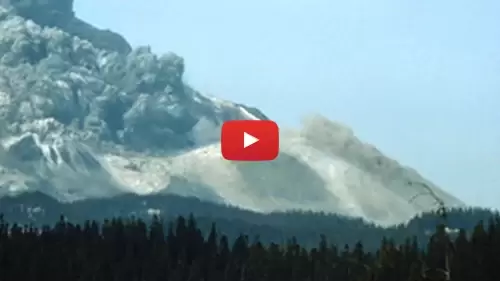
Mountainous Views
Watch this live webcam of Mt St Helens in Castle Rock, Washington. This volcano is popular for its eruptions & well known for its ash explosions and pyroclastic flows. Mount St. Helens is most famous for its catastrophic eruption on May 18, 1980. That eruption is economically destructive volcanic event in the history of the USA.
If you want to visit Mount St Helens, stop by the visitor center to get information. Hiking late spring through early fall is the most popular season. Most climbers use the Monitor Ridge Route from Climbers Bivouac. This route gains 4,500 feet in five miles to the crater rim at 8,328 feet elevation.
This volcano is part of the Cascade Range. This range is a series of volcanic mountains that stretch from northern California to British Columbia, Canada. The eruption on May 18, 1980, was the most destructive in U.S. history. It resulted in the loss of 57 lives and extensive damage to the environment. Also, it included the obliteration of over 230 square miles of forest. The event was preceded by a two-month series of earthquakes and steam-venting episodes. This served as a precursor to the explosive eruption.
The volcanic activity led to the formation of a new lava dome within the crater. Additionally, it has continued to grow over the years. The area surrounding Mount St. Helens has since been designated as a National Volcanic Monument. As a result, it allows scientists to study the ecological recovery and geological processes that have taken place since the eruption.
Weather Conditions
The region experiences a temperate maritime climate, which is marked by mild, wet winters and warm, dry summers. Precipitation is abundant, particularly during the winter months, when the area can receive significant snowfall at higher elevations. This climatic pattern contributes to the lush vegetation and rich biodiversity found in the surrounding ecosystems.
Temperature variations at Mount St. Helens can be quite pronounced, with average summer highs reaching into the 70s and 80s Fahrenheit, while winter temperatures can drop below freezing, especially at higher altitudes. The mountain itself plays a crucial role in local weather patterns, as its elevation creates microclimates that can lead to sudden changes in weather conditions. Visitors to the area should be prepared for rapidly shifting weather, which can include rain, snow, and fog, even during the summer months.
About Castle Rock, Washington
This charming town is situated along the banks of the Cowlitz River, providing residents and visitors with stunning views and a variety of outdoor recreational opportunities. The area is characterized by its lush forests, rolling hills, and proximity to the majestic Mount St. Helens, making it an ideal destination for nature enthusiasts and adventure seekers alike.
The town’s rich history, rooted in the timber industry, is reflected in its quaint downtown area, where historic buildings house local businesses and eateries.
The community of Castle Rock is known for its friendly atmosphere and strong sense of belonging among its residents. Local events, such as the annual Castle Rock Fair, foster a spirit of camaraderie and celebration. Furthermore, it draws people together to enjoy live music, food, and various activities.
The town also boasts several parks and recreational facilities, including the popular Castle Rock Sports Complex, which offers sports fields, playgrounds, and picnic areas for families to enjoy. This commitment to community engagement and outdoor activities contributes to the overall quality of life in Castle Rock.
In addition to its natural beauty and community spirit, Castle Rock is conveniently located near major highways, providing easy access to larger cities such as Longview and Kelso. This strategic location allows residents to enjoy the tranquility of small-town living while still being within reach of urban amenities.